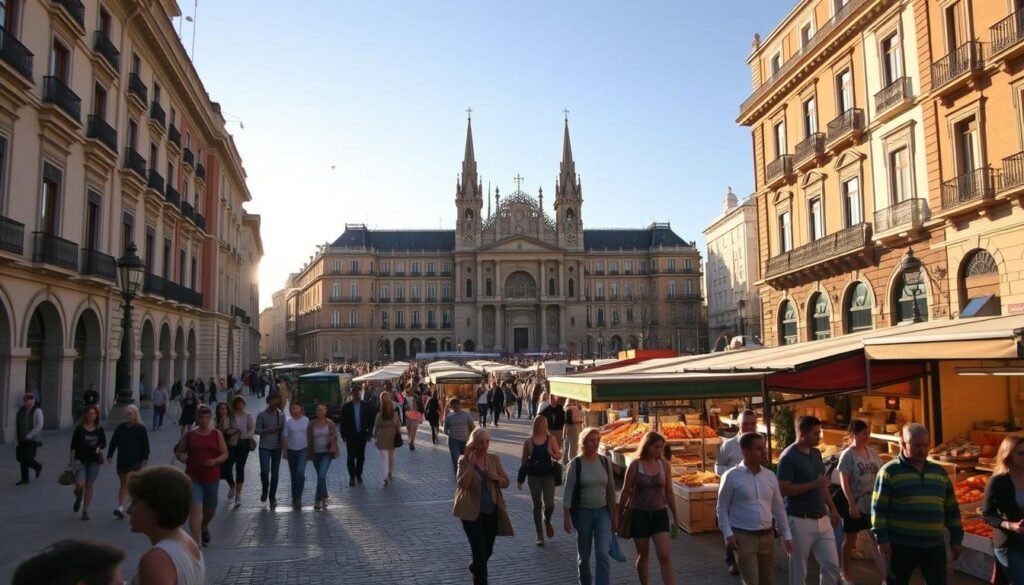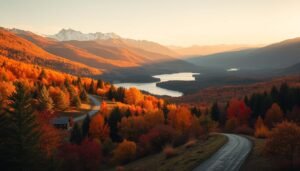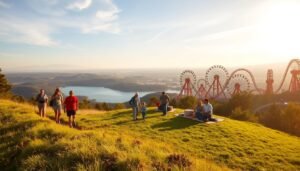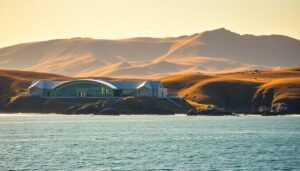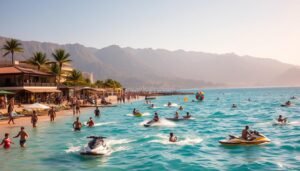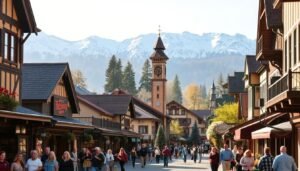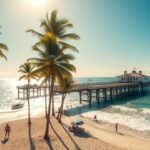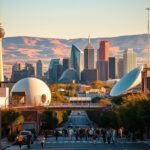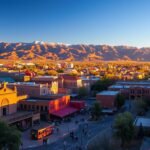Surprising fact: over 10 million visitors arrive each year, yet the capital keeps a neighborhood feel that hooked me immediately.
I fell for this city because it blends grand avenues like Gran Vía with family-run tapas bars and lively streets. I’ll share how I plan days so you see headline sights and local gems without rushing.
My guide is built for first-timers and repeat visitors. It balances must-sees like the Royal Palace and Retiro Park with offbeat spots, seasonal notes for 2025, and tips for smart walking routes.
I love the friendly locals, late dining hours, and that mix of old-world beauty and modern energy. Read on for quick wins: best neighborhoods, rooftops, flamenco, and budget-savvy museum hours.
Key Takeaways
- I organize days to mix major sights and local finds.
- Gran Vía and the Royal Palace are must-sees for atmosphere.
- Seasonal updates for 2025 matter for events and schedules.
- Eat late, move at a relaxed pace, and ask locals for tips.
- Use this guide as a flexible mini itinerary for easy walks.
Best things to do in Madrid
I arrange neighborhoods like puzzle pieces so breakfast, museums, and evening drinks flow naturally.
I map my time around compact areas: Sol and Plaza Mayor for mornings, museums and Retiro midday, and Gran Vía or a rooftop at dusk. This keeps routes short and energy high.
I split recommendations by experience level. For a first trip I pick classic places: Royal Palace, Retiro Park, Mercado de San Miguel, and a flamenco night. For a return visit I save rooftops, contemporary art stops, and longer food crawls in La Latina and Lavapiés.
A free walking tour from Plaza Mayor on day one is my go-to for city layout and quick history. I balance paid tickets with free museum hours so the plan stays flexible and budget-friendly.
Quick comparison
| Focus | First trip | Return visit | Best time |
|---|---|---|---|
| Landmarks | Royal Palace, Almudena | Contemporary galleries | Morning |
| Food | Mercado de San Miguel, churros | La Latina tapas crawl | Late evening |
| Views | Gran Vía at dusk | Rooftop bars and street-art views | Golden hour |
Explore Madrid’s neighborhoods like a local
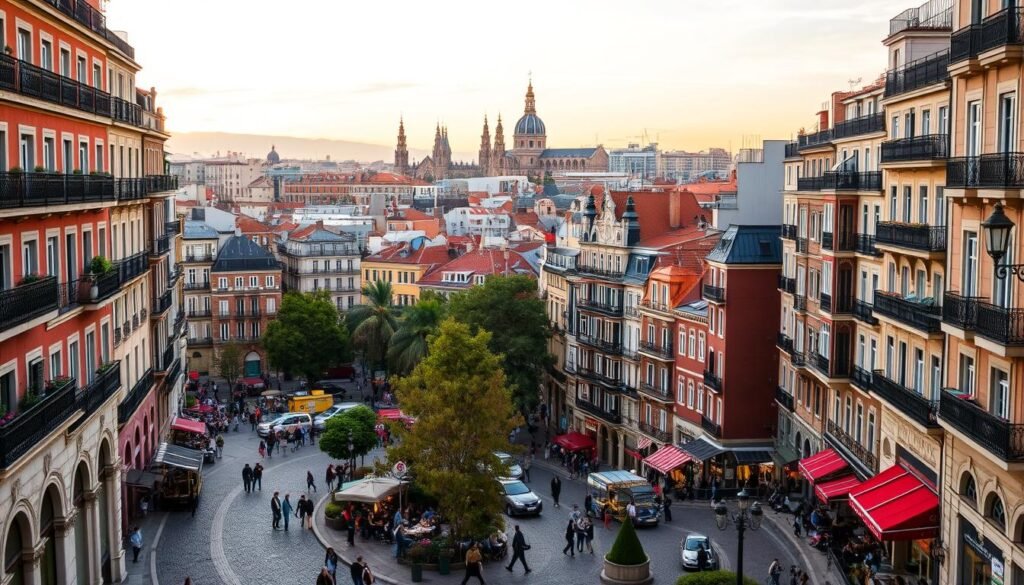
I start my exploration at the city’s core, where wide avenues meet narrow lanes and every corner invites a stop. From Sol I radiate outward, then walk toward plaza mayor for morning photos and easy people-watching before crowds arrive.
Sol, Plaza Mayor, and Gran Vía bundle energy and classic architecture. I thread Gran Vía into side streets that spill into tapas bars and small cinemas so the route feels like a moving tasting.
La Latina is my foodie loop. I time Sundays for El Rastro on Calle de Toledo and Calle de Embajadores (9:00–15:00) and sample market bites at Mercado de San Miguel.You can learn things-to-do-in-oklahoma-city
Chueca and Malasaña offer different beats: Chueca’s inclusive pulse and Malasaña’s indie vibe around Fuencarral Street. I duck into cafés and vintage shops as I go.
Salamanca and Barrio de las Letras pair polished boutiques with literary lanes near the museums. Then I map Lavapiés and Embajadores for murals, galleries, and Reina Sofía highlights.
- I avoid the most tourist blocks by using parallel streets that keep the same charm.
- I pick local restaurants and a friendly bar in each area so every stop tastes like the neighborhood.
Unwind at Retiro Park: lakes, gardens, and iconic landmarks
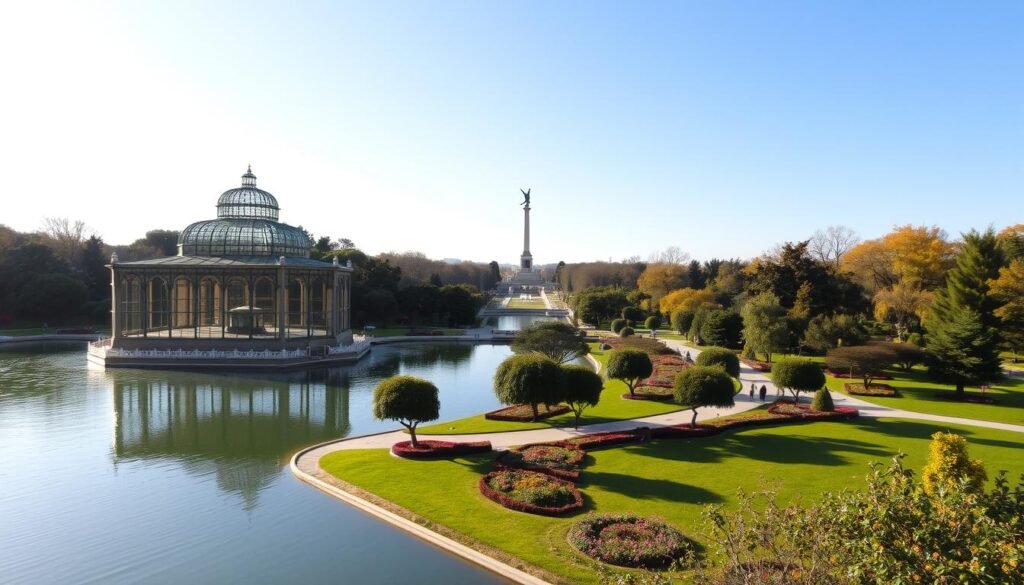
My favorite half-day escape is El Retiro; it feels like a green pause in the heart of the city. I plan a gentle loop that covers the lake, glass palacio, and hidden corners without rushing. This is a relaxed morning that fits into any day.You can learn things-to-do-in-wilmington-nc
Rowboats by the Alfonso XII monument
I rent a rowboat near the Alfonso XII monument when the light is soft and the water is calm. Pro tip: aim for early morning for smoother reflections and better photos.
Palacio de Cristal and the Rose Garden
I always step inside Palacio de Cristal for free exhibitions and the bright, mirrored views of nearby gardens. The Rose Garden blooms at its best in May–early June; later I picnic nearby or visit the conservatory displays of seasonal art.
Secret corners and the Fallen Angel
Jardines de Cecilio Rodríguez feels like a hidden escape, complete with peacocks and quiet paths. I also hunt down the Fallen Angel statue — a quirky stop that adds charm to a short walk.
“A slow lap around the lake gives the best views back toward the skyline.”
- I map a gentle walk that links all highlights so one morning covers the main spots.
- If the weather holds, I grab coffee and picnic supplies and stretch the visit into an afternoon.
- For logistics and timing check Retiro Park details.
Step inside the Royal Palace and Almudena Cathedral

The palace and its neighbor, the cathedral, form a compact pair of grand architecture and quiet reflection.
Stately rooms, chandeliers, and royal history.
I lead with the Royal Palace’s public salons. The chandeliers, gilded ceilings, and tapestries feel theatrical yet lived in. I point out the Throne Hall and the Hall of Mirrors as my must-see rooms for their scale and artful detail.You can learn fun-things-to-do-with-kids-near-me
Cathedral interiors, stained glass, and the crypt
Almudena’s main nave is free, which makes it an easy, quiet stop. I linger at the stained glass and choose whether the crypt is worth the extra fee. If you prefer calm, the nave alone gives a strong, reflective moment.
Tips for tickets, timing, and crowd-free visits
I book online when I can. For EU visitors, the palace offers free entry in the last two hours daily; lines still form, so plan ahead.
“Aim for late afternoon entry or the final hours if you qualify for free access — the rooms feel less crowded and the light is kinder.”
- I pair the palace with the cathedral next door so transitions are short.
- If the line looks long, I grab a coffee nearby and return with a timed ticket.
- For photos, I frame both façades side‑by‑side from Plaza de la Armería for a signature city shot.
| Feature | Why I care | Practical note |
|---|---|---|
| Throne Hall | Grand scale and chandeliers | Best mid-morning for steady light |
| Palacio galleries | Royal portraits and decorative art | Buy a timed ticket online |
| Almudena nave | Free, stained glass views | Open access most hours |
| Almudena crypt | Historic tombs and quiet space | Requires paid ticket |
Catch sunset at the Temple of Debod
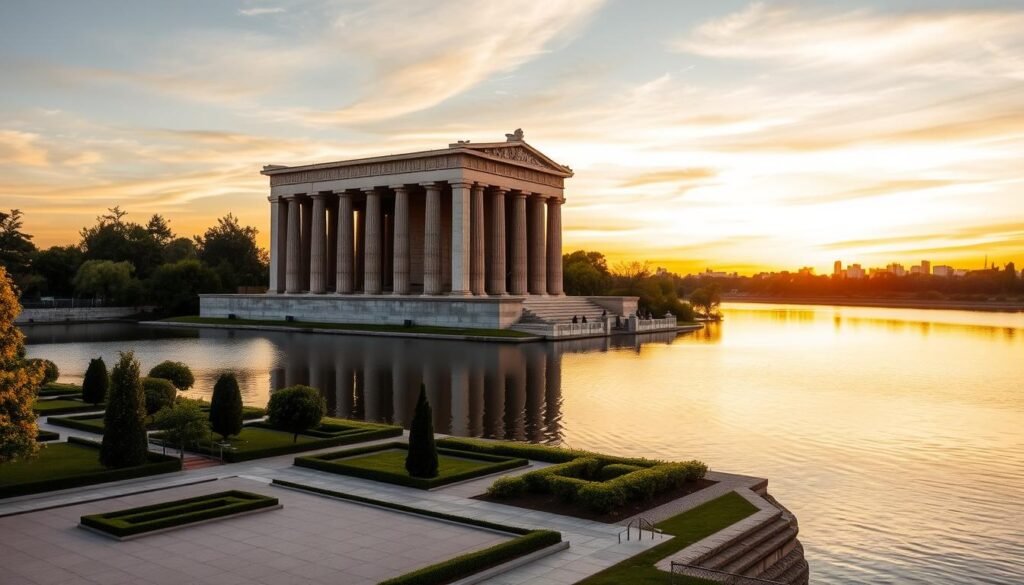
Catching the last light at the Egyptian monument gives the day a quiet, cinematic finish. I aim for an early arrival so I can claim a front-row spot as the stones warm and the skyline softens.
The Temple of Debod is a 2nd-century BCE egyptian temple gifted to Spain in 1968. It sits near Parque del Oeste, just a short walk from the Royal Palace gardens, which makes it easy to pair both stops in one evening.
Why this spot glows at golden hour
I often skip the interior line if it’s long and circle the exterior for close-up carved details. The stones catch the sun and the reflections create great photo views.
When the sky turns pink, the best angle for photos is from the west terrace. That side frames the temple with the city skyline behind it.You can learn things-to-do-in-mexico-city
- I walk from the palace gardens — it’s a five to ten minute route that keeps the evening seamless.
- If clouds roll in, I stay in the park for moody panoramas or head to a nearby bar for a warm drink.
- Keep an eye on your bag as the area fills up at sunset; it’s busy but friendly.
“This stop resets the day’s pace and often makes me say, quietly, that I came for this exact moment.”
| Tip | Why it helps | Practical note |
|---|---|---|
| Arrive 20–30 minutes early | Secure a front-row view | Evening lines form fast at golden hour |
| Circle the exterior | See carvings without queuing | Interior entry is free but limited |
| Pair with Royal Palace | Saves time and frames the evening | Short walk through palace gardens |
| Nearby bite afterward | Extends the night without long transit | Look for bars near Plaza de España |
See the city from above: rooftop bars and observation decks
When I want a skyline fix, I head for high ground and plan my evening around one unforgettable rooftop stop. A single terrace can give sweeping panoramas, close-up street grids, and a relaxed drink without rushing.
RIU Plaza España 360º: glass-floor thrills and cocktails
I time RIU Plaza España for just before sunset. Arrive early, walk the full perimeter, then step onto the glass floor as the light softens.
- Tip: expect lines at golden hour — earlier entry cuts waiting time.
- Photo order: wide skyline first, then street-grid details as lights pop.
Mercado de San Antón — 11 Nudos: budget-friendly drinks
For a casual night I hit 11 Nudos on the market rooftop. Expect ~€3 beer, €5–6 wine, and €8 cocktails.
Why I like it: low prices, late hours, and lively local bars nearby for hopping.
Palacio de Cibeles observation deck: big views for a small ticket
I slot the Palacio de Cibeles into a museum or shopping afternoon. The observation deck costs about €3 and yields sweeping city panoramas.
“Pick one sunset stop and one night skyline stop — it keeps evenings relaxed and your photos varied.”You can learn things-to-do-in-lisbon
- Use hotel rooftops when access allows; check rules beforehand.
- Take the elevator if you have gear; stairs are faster when lines form.
- Secure bags and phones on glass floors for safe, stress-free shots.
Walk Gran Vía at dusk for dazzling city views
![]()
Walking Gran Vía near sunset lets me watch the city shift from day rhythm to electric evening. I pick the stretch between Plaza de España and Callao for the best blend of light and scale.
I aim to start about 20–40 minutes before sunset. That window keeps sky color while the façades and signs begin to glow. The layered light gives each building a cinematic edge.
Pause at the Gran Vía–Fuencarral corner for wide views and people-watching. I like the raised sidewalks near Telefónica for a clearer line of sight without the densest crowd.
Easy detours: slip into Calle de la Montera for tapas or turn down Calle del Barquillo for a quick drink. These short side lanes keep the momentum and the fun vibe without losing the main view.
- Photo checklist: façade details, marquee lights, a wide skyline shot, and a street-level candid of local life.
- If Gran Vía feels packed, use parallel Gran Vía alternatives like Fuencarral for a similar look with fewer people.
- Pair it: finish the walk with a rooftop cocktail, or time the route so you reach Temple of Debod for final sunset reflections.
“Start before sunset and linger — that layered glow is a small world of its own.”
Eat your way through Madrid: tapas, mercados, and more
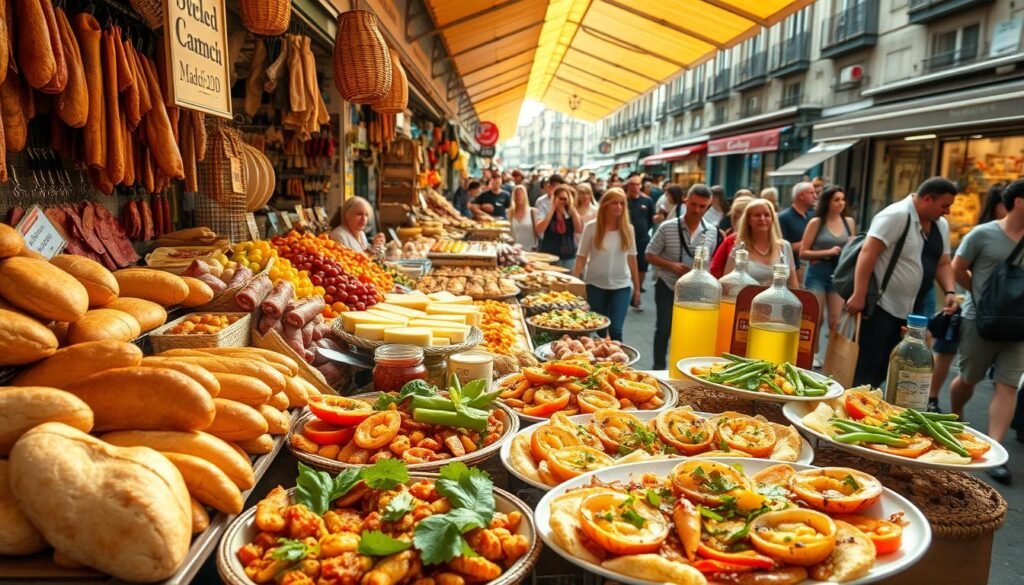
My appetite guides much of my route; food shapes how I plan each meal and pause. I start at Mercado de San Miguel and graze—two or three small bites per counter so I taste more without overfilling.
Mercado de San Miguel: graze on cheese, seafood, and sweets
The market has organized stalls with excellent variety. I pick a savory stop, a cheese stall, then something sweet.
Tapas and wine crawl: classic bars and modern bites
I map a simple crawl that mixes classic bars and a couple trendier restaurants. Start with a busy counter—turnover means fresher plates and lively service.You can learn things-to-do-in-oahu
What to order: patatas bravas, croquetas, albóndigas, and raciones
- Order first: patatas bravas and croquetas for quick hits.
- Then: albóndigas or a ración for the table.
- Reset: cava between rich bites, switch to a Spanish red later.
- Timing: aim for late dinner hours so you dine with locals.
“I pace a savory stop, a cheese stop, and a sweets stop to keep the day balanced.”
Sweet stops: churros, cube croissants, and ice cream

I save a sweet run for late afternoons when a sugar break resets my energy between museums and long days.
Churros con chocolate at Chocolatería San Ginés
San Ginés has served churros since 1894 near Puerta del Sol. Expect lines and roughly €6 for six churros with chocolate.
I aim for a mid-afternoon slot or just after dinner; that short timing often shortens the wait. Sometimes I swap chocolate for a café con leche for a softer finish.
Local bakery gem: Panem’s Saturday cube croissants
Panem makes cube croissants only on Saturdays, about €6 with rotating weekly flavors. I arrive ten minutes before opening to snag one for photos and to avoid long queues of people.
Maison Glacée is a must for homemade waffle cones and flavors like vanilla with Havana rum. I love pairing a cone with a stroll; the cones feel world-class and hold up better than most.
- I weave these stops between sights so treats act as small breaks.
- If lines are long, nearby bakeries and street vendors offer quick sweet fixes.
- I bring fragile pastries back to the hotel only when packaging protects texture; most are best eaten immediately.
“A timed sweet stop makes the day sweeter and the photos worth framing.”
Go museum-hopping without breaking the bank
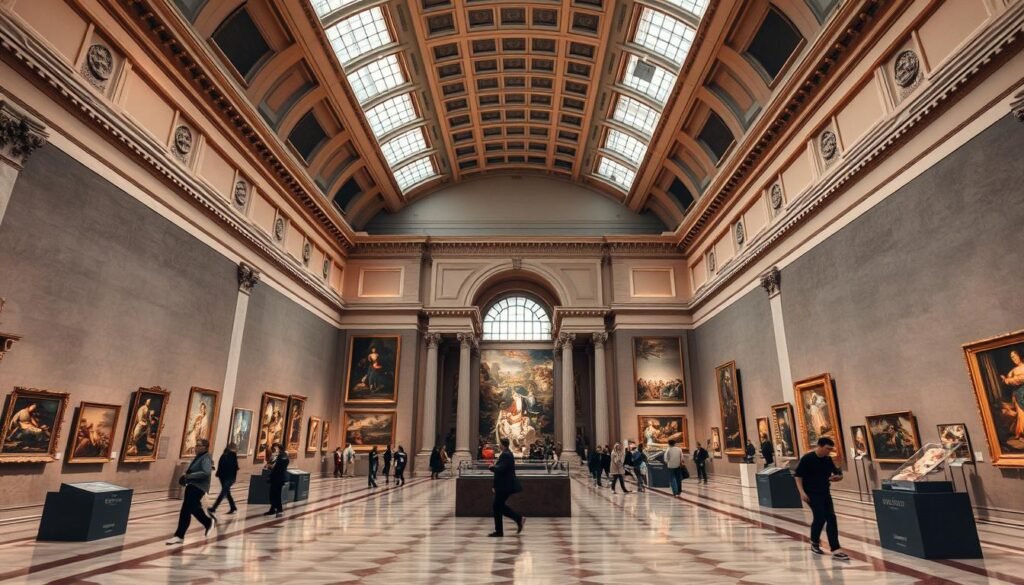
When I build an art-focused day, timing the free hours is the secret that saves both money and patience. I use a compact route that mixes Prado, Reina Sofía, and Thyssen so I see key works while avoiding long waits.
Prado, Reina Sofía, and Thyssen: free hours and must-see highlights
I hit the Prado’s free window Mon–Sat 18:00–20:00 and Sun 17:00–19:00. Start at the Prado for Velázquez and Goya when lines ease, then walk to Reina Sofía.
Reina Sofía (daily 18:00–20:00; Sun 13:30–14:30) houses Picasso’s Guernica — I go straight there so I don’t miss the world-famous canvas.
Thyssen offers free entry Mondays 12:00–16:00. If timing is tight, I sometimes buy a ticket for an earlier slot because saving time is worth the fee.
Contemporary and urban art: Banksy-style exhibits and street art tours
I pair a street art tour in Lavapiés or Embajadores with museum time for a fresh, modern day. Tours show Banksy-style exhibits and murals that feel alive after gallery visits.
Tip: schedule the walking tour between galleries so you get outdoor color without doubling back.
Royal Botanic Garden and Archaeological Museum: free-entry windows
Royal Botanic Garden is free Tuesdays after 14:00. The National Archaeological Museum is free Sat after 14:00 and Sun mornings before 12:00.
I often slot one of these free stops between the main museums and Retiro for a calm break and better focus.
“Budget-friendly timing lets me see the highlights without rushing — and saves a little for a café reward.”
- I start Prado late afternoon, move to Reina Sofía during its free slot, and finish with Thyssen on Monday if possible.
- I buy tickets when earlier access beats long queues; short waits cost energy that I value more than the saved euros.
- Screenshot this checklist: Prado Mon–Sat 18–20 / Sun 17–19; Reina Sofía daily 18–20 / Sun 13:30–14:30; Thyssen Mon 12–16; Botanic Tue after 14:00; Archaeology Sat after 14:00 & Sun before 12:00.
Don’t miss a flamenco night out
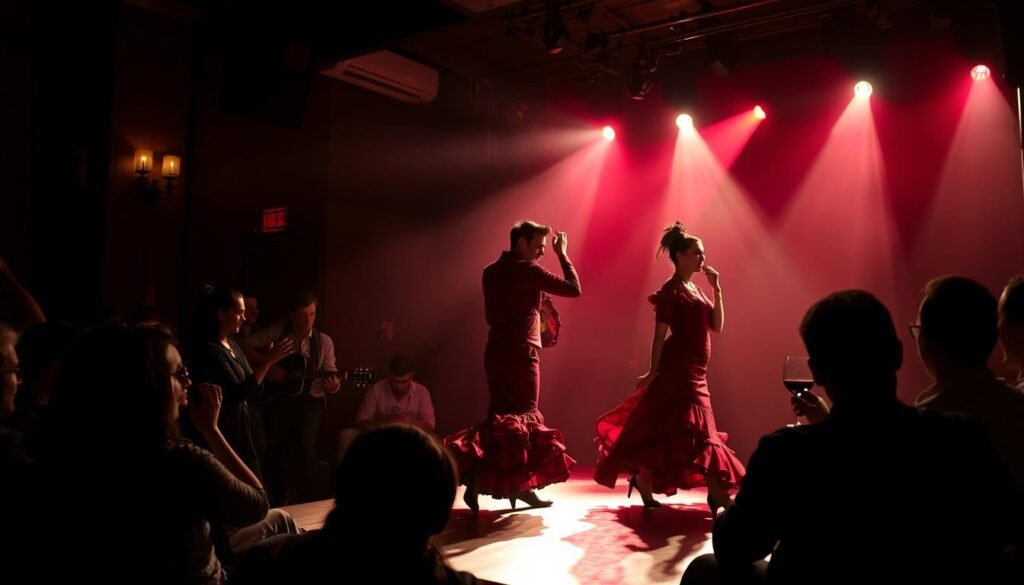
Flamenco is raw, immediate, and best experienced close enough to see the dancers’ expressions.
I prefer tablaos — small rooms with thick atmosphere where singing, guitar, and dance feel electric. I pick venues with strong reviews, late slots, and good sightlines so the performance lands hard.
Tablaos for intimate, passionate performances
Reliable names I trust are Las Tablas, Las Carboneras, and La Cueva de Lola. Typical sets include palmas (hand claps), cante (singing), toque (guitar), and baile (dance). Some shows include a drink; check the menu when you book.
- How I pick a tablao: small room, strong reviews, and a late slot for the best energy.
- Pre-show and post-show: I grab a quick bite, enjoy the show, then hop to nearby bars for a nightcap and local chat.
- Booking and seating: I book one to two weeks ahead and aim for seats near the front or center for footwork and faces.
- What I wear: smart-casual and comfy shoes — you’ll sit for about an hour and want to blend in.
- Etiquette: stay quiet during solos so every person hears the detail; applause after sections is welcome.
- Afterward: a short walk through lit streets helps me unwind as the city hums.
“A flamenco night often becomes the single memory that defines a visit.”
| Aspect | My approach | Practical tip |
|---|---|---|
| Choosing a tablao | Small room, clear reviews | Book a late slot for atmosphere |
| What the set includes | Singing, guitar, clapping, dance | Expect 45–60 minutes with intermission |
| Seating | Front/center for best view | Reserve early; arrive 20 minutes ahead |
| Night routine | Pre-show bite and post-show bars | Map nearby bars before you go |
Final note: I treat a flamenco night as a cultural highlight on any travel list. The closeness, passion, and rhythm leave a lasting impression.
Easy day trips from Madrid: Toledo and Segovia
Combine Roman engineering and medieval lanes in one day, and you feel the region’s deep history at every step.
I often pick a combined schedule that leaves near the Royal Palace. The usual plan sends us to Segovia first for the Roman aqueduct, the Alcázar, and the cathedral. Segovia’s old town is UNESCO-listed, so I move early to beat crowds and get the best light for photos.
Toledo’s medieval lanes, cathedral highlights, and El Greco
In the afternoon I explore Toledo’s winding alleys and visit the cathedral. I hunt for El Greco’s The Burial of the Count of Orgaz and take slow breaks on scenic viewpoints. The city feels compact but layered, so I keep my pace steady.
Segovia’s aqueduct, Alcázar, and storybook streets
I start Segovia early. The aqueduct and Alcázar shine in soft morning light. Walking the stone streets is easy but tiring, so I pick a café stop before heading back for lunch in the capital or a planned break on a guided route.
How I book tours, time my day, and what I pack
Guided tours vs DIY: I book a combined tour when I want logistics handled. I DIY if I seek flexibility and lower cost. In high season I favor guided tours; in shoulder months I take trains and explore solo.
“I prioritize Segovia’s aqueduct and Alcázar early, then save Toledo’s lanes and El Greco for a relaxed afternoon.”
| Choice | When I pick it | Practical note |
|---|---|---|
| Guided tour | Busy season, limited time | Leaves near Royal Palace; includes transport |
| DIY (train + local) | Flexible schedule, lower cost | Buy rail tickets early; allow transfer time |
| Packing | All seasons | Layers, sun protection, comfy shoes |
- I bring snacks, water, and light layers; stone streets demand good shoes.
- I book tickets or a tour with a 24–48 hour cancellation window when possible.
- Group tours are a great place to meet new friends, yet I carve solo breaks at viewpoints.
- Budget note: a guided tour covers transport and guide; rail plus local transport can be cheaper but needs more planning.
After the long day, I keep dinner simple near my hotel. A mellow nightcap or early bed works best after a full itinerary of castles, cathedrals, and world-class views.
Smart travel tips for the capital: transport, tickets, and safety
Arrivals set the tone; I decide transport choice by luggage, arrival time, and budget.
I list my airport options first. From Adolfo Suárez Madrid‑Barajas I use the RENFE train from T4 for fast central access (round trip ~€5.20). Bus 203 runs 24/7 to Atocha for about €5. Metro Line 8 connects well but needs transfers with luggage. A taxi flat fare to central areas is roughly €30; rideshare apps are often a bit cheaper.
I pick transport by arrival time and baggage. If I land late with heavy bags, I grab a taxi. If I land light in the morning, I take the train or the metro and enjoy a short walk after check‑in.
Best months: I prefer May and October for mild weather and fewer crowds. Summer brings heat and some closures in August. Winter is quieter, with festive markets at Christmas but chilly nights.
I mostly pay by card, but I carry small cash sums for markets and tips — €1–2 is common for good service. I always book must‑see tickets online when possible; popular museums and rooftops sell out on busy days.
Pickpockets target tourist hubs and packed transit. My simple routine: keep a phone in a front pocket, use a crossbody bag with a zipper, and scan crowds for odd behavior. Stay alert but keep the mood light — I never let caution spoil the day.
“Pack an eSIM or a short local plan, store PDFs and QR codes in one folder, and screenshot backups for offline access.”
| Need | When I use it | Practical note |
|---|---|---|
| RENFE (T4) | Quick trip with light luggage | Round trip ≈ €5.20; saves taxi cost |
| Bus 203 | Late arrivals or Atocha arrivals | 24/7 service, €5, direct to Atocha |
| Taxi / rideshare | Late night or lots of bags | Taxi flat ~€30; Uber slightly cheaper |
| Metro | Short transfers inside center | Line 8 needs a transfer; handy with small bags |
- I favor a walking‑first approach for central days and switch to metro for longer hops.
- Book tickets early for peak dates; leave flexible plans for weather or energy levels.
- Keep a short cheat sheet of apps and numbers: RENFE, EMT bus, Cabify/Uber, metro maps, and emergency contacts.
Conclusion
I close most guides the same way: pick one quiet view and let the day settle. I find a rooftop, bench, or plaza and watch light change; that simple act makes the visit feel complete. things madrid captures the balance between landmark stops and everyday rhythm, and I list practical beats so you can plan better.
, I sketch days around three slices: neighborhood mornings, a park or museum in the afternoon, and a sunset view. Prioritize signature places on your first trip and save a few favorites for next time.
Mix headline sights with slow rituals — coffee, mercados, an evening walk — and leave blank slots for surprises. Book key pieces early, keep flexibility, and trust the people you meet; they make the city warm.
End the night looking over lights; that view makes the world feel small and keeps you wanting another return. things madrid


